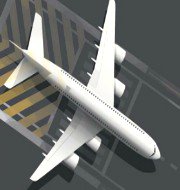Transonic Truss-Braced Wing
The collaboration between NASA and Boeing aims to revolutionize the aviation industry by developing an eco-friendly Boeing plane. The innovative wing design, known as the Transonic Truss-Braced Wing, holds the potential to significantly reduce greenhouse gas emissions in single-aisle passenger aircraft.
Transonic Truss-Braced Wing: Optimizing Efficiency and Reducing Emissions
The Transonic Truss-Braced Wing design is characterized by a longer and thinner structure supported by struts. This unique design optimizes gliding capabilities, resulting in reduced fuel consumption for propulsion. By requiring less fuel, the aircraft’s efficiency is improved, leading to a substantial reduction in emissions. Single-aisle passenger aircraft, which currently contribute to nearly half of the aviation industry’s emissions, can greatly benefit from this innovative wing design.
Financial Commitment and Recognition
Both NASA and Boeing have pledged a combined amount of $1.15 billion to bring this innovative idea to fruition. NASA’s contribution amounts to $425 million, while Boeing and its industry partners have invested $725 million. This joint effort has gained special recognition from the US Air Force, granting the project the prestigious status of an X-plane.
Impressive Reductions in Fuel Consumption and Emissions
The Transonic Truss-Braced Wing, in combination with advanced propulsion plans, cutting-edge materials, and electronic systems architecture, is projected to achieve a remarkable 30% reduction in fuel consumption compared to today’s best-in-class aircraft. Moreover, Boeing estimates an even more impressive 60% reduction in emissions and fuel costs when compared to aircraft manufactured in 2005. These reductions signify a significant step towards a greener and more sustainable aviation industry.
X-66A: Driving Decarbonization and Paving the Way for the Future
The full-scale demonstrator for the Transonic Truss-Braced Wing will be named the X-66A. This ambitious project holds the goal of driving the decarbonization of the aerospace industry and paving the way for greener, cleaner, and quieter aircraft. By combining innovative design with advanced technology, the X-66A aims to set a new standard for environmentally friendly air travel.
Towards a Carbon-Neutral Aviation Industry
The collaboration between NASA and Boeing aligns with the US Aviation Climate Action Plan, which envisions a carbon-neutral aviation industry. The development of the Transonic Truss-Braced Wing and its integration into future aircraft models is a crucial step towards achieving this goal. By reducing emissions and fuel consumption, the project aims to make air travel more sustainable and contribute to a cleaner environment.
Month: Current Affairs - June, 2023


